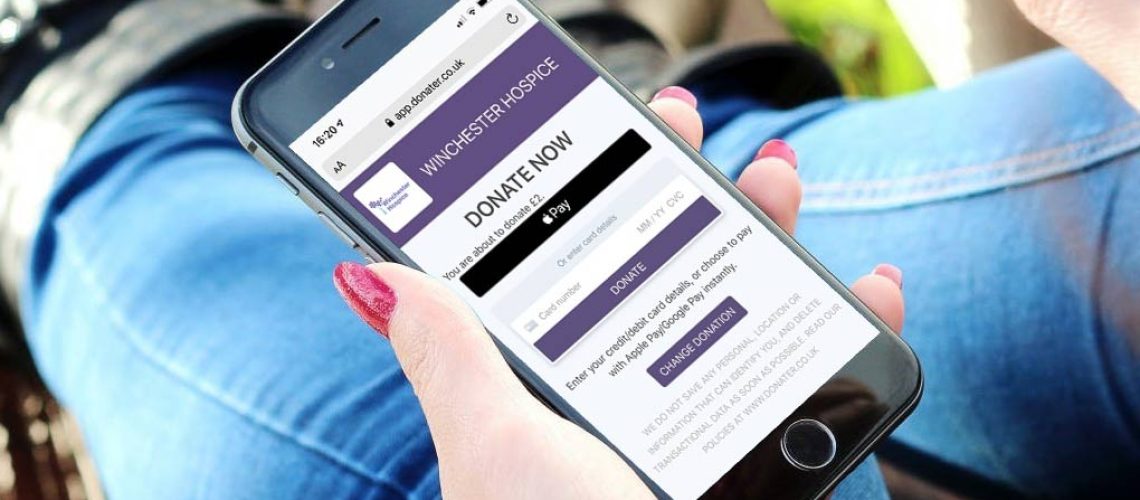We’ve been physically apart from friends and family, but perhaps more connected to them than ever through video calls, Zoom catch ups and easy instant photo sharing. Businesses have moved employees online through remote working enabling business operations to continue for many. You’ve spent our down-time with multitudes of entertainment at our fingertips through Netflix, Prime and other streaming services. The country has kept active with Joe Wicks and other fitness teachers via YouTube.
And it’s not just personal and business relationships that can be kept alive by digital means – Charities need to fully embrace online and digital technology too.
In recent years we’ve seen how charities tend to be slow to embrace new technologies – Last year a study found that:
- 52% of charities do not have a digital strategy
- 47% of charities are worried about keeping up with the pace of technology
Unfortunately, the restrictions that society has seen during the lock down and what continue to be in place as we enter a new normal, have pressed fast-forward on the need for adaptation and innovation within the digital world.
Fortunately, technology means that we have never been more prepared to face these unprecedented times.
How can digital technology help charities survive social distancing?
There are various ways that going digital can give your charity an advantage and help you survive this ongoing crisis.
If you’re not already online, why not?
There’s really no excuse – If you’re not already fundraising online, then you need to be, and pronto.
Last year the charity sector saw a huge rise of 26% in one-off online donations in comparison to the same time period in previous years. Now really is the time to get this sorted. You might not be able to get physically in-front of potential donors on the High Street or door-to-door fundraising, but you can appeal to their heart via your website. It’s currently your biggest asset, so make sure it’s focused on the user experience.
GET ONLINE – TOP TIPS:
- Include different donation amounts – For example, £5, £10, £30, £50 etc and experiment with them to see which amounts are most popular
- Calls to action – Be mindful that not everyone who visits your website will have the means to make a monetary donation. Offer them other ways they can support you: subscribing to your newsletter, sharing your website and social media platforms with friends, or signing relevant petitions.
If you’ve been slow to embrace digital technology, then now is the time to upskill!
There’s no shame in it. If your workforce are not digitally confident then don’t worry – Just do something about it! As mentioned earlier, charities have seemed slow to adopt digital technology, yet those who grabbed online opportunities and ran are likely to be at an advantage now. With many people still furloughed or working from home, now could be the perfect time to upskill yourself and your team in digital technology through online courses and lessons from digital marketing to social media.
If after upskilling you still feel unsure, get expert support
45% of charities wish their senior team had some experience or understanding of digital tools. Wow. That’s a pretty big leadership gap. Thankfully there are plenty of people willing to help! There are various trusts, schemes and volunteer platforms that work to match digital and communications experts with charities needing a bit of digital support. This is well worth looking into to help your charity get ahead and feel ready for a digital leap.
The personal touch goes a long way
Historically, we’ve seen face-to-face fundraising work really well during periods of recession, however Covid-19 has again added a new dimension to any looming financial crisis.The reason why face-to-face fundraising tends to work so well is because it creates a real connection between charities and their donors – It feels more personal and therefore it lasts.
Yet again, technology comes to our aid. Despite face-to-face fundraising being out of the question for the foreseeable future, we can use digital means to build and maintain these personal relationships through CRM and email marketing systems. In this way, you can identify supporters who think and behave in similar ways, and group them together.
This enables you to communicate to mass audiences whilst still keeping it personal, sending tailored email fundraising appeals – And all while you still working from home. This kind of segmentation of donors is a huge benefit to your email marketing campaigns.
BE PERSONAL TOP TIP: 25% of email recipients actually open the email… But don’t be downhearted – You can use the above segmentation tool to effectively tailor your campaigns, increase your open rate, and thus make more conversions.
Make use of existing technology
Let’s be honest – Not many people want to be handling cash right now. Notes and loose change have been replaced with contactless and mobile payments – The jingling of that fundraising bucket needs to be replaced with the beep of a contactless card or smartphone payment app like Google or Apple Pay.
Do you already own contactless devices for digital donations? Don’t let them go out of use! People are using contactless now more than ever, so do contact newly re-opened retail sites about hosting your device near their point of sale systems.
If you haven’t yet invested in contactless fundraising devices, why not start with Donater’s simple smart stickers? They can be placed anywhere – Effectively turning traditional charity boxes into digital donation points. For more information on how we can help you step into the world of digital donations, head to our website.


